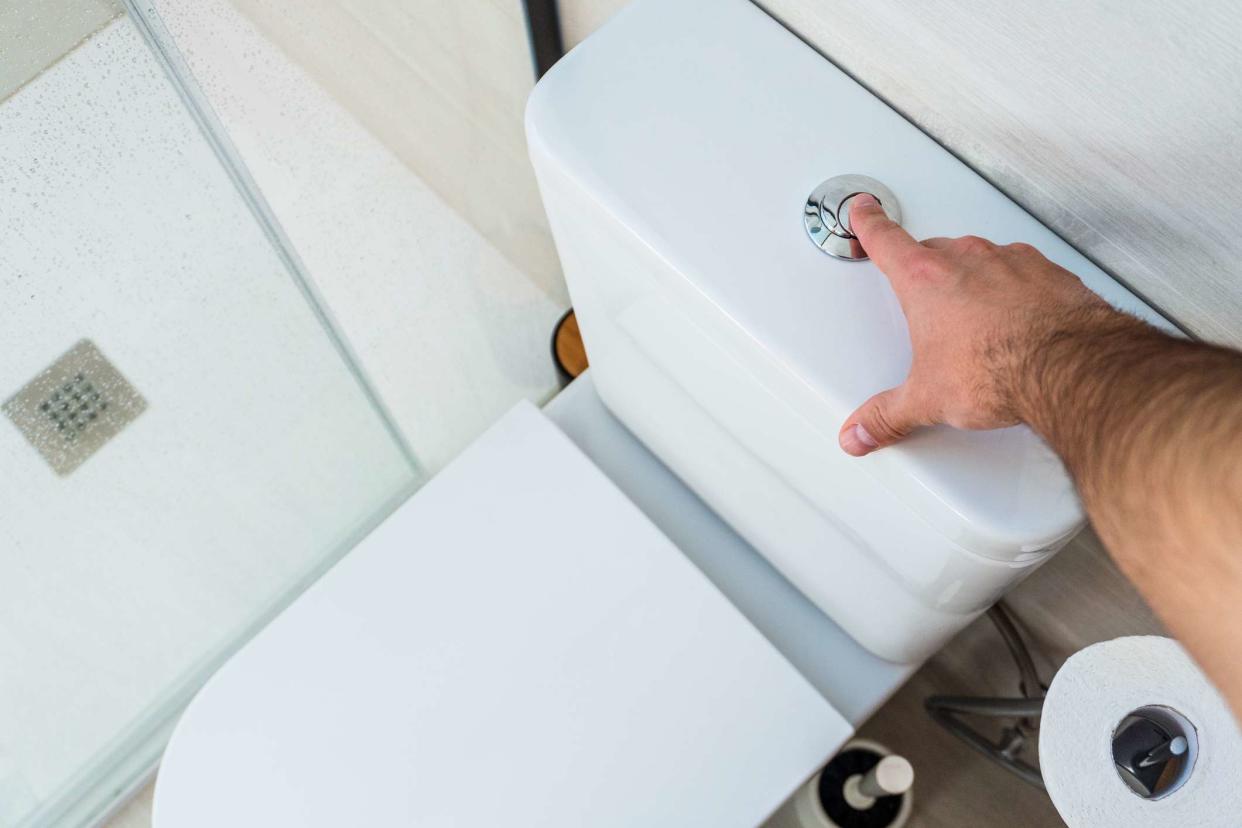Should You Put Fabric Softener in Your Toilet Tank? What You Need to Know

Estanis Banuelos / Getty Images
The internet is an incredible resource, but you shouldn't blindly trust every hack and DIY shortcut that gains traction in the online community. One such hack involves adding fabric softener to the toilet tank in an effort to reduce the smell of the toilet. Some people even claim that the fabric softener helps to keep the toilet clean.
While the strong scent of the fabric softener will certainly cover most unpleasant toilet smells, there are several problems that can occur when you put fabric softener in a toilet tank.
How It Works
The idea behind adding fabric softener to the toilet tank is relatively straightforward. Simply pour a cup of fabric softener directly into the toilet tank, then each time the toilet is flushed, the movement of the flowing water will cause a pleasant aroma to emanate from the toilet bowl. However, fabric softener is not designed for this purpose.
Liquid-based fabric softeners are essentially an oil-based mix of softening agents, bluing agents, smoothing additives, antimicrobial agents, whitening agents, and other chemical components, like synthetic colorants and fragrances. This concoction is made to cling to fabric in the wash, improving the feel of the laundry by adding a chemical coating to the material.
Why Fabric Softener Is a Bad Idea
The reason the fabric softener clings to clothing instead of simply being washed away is that it is hydrophobic, meaning that it actually repels water, which is just one of many reasons why putting fabric softener in the toilet tank is a bad idea.
Drain Clogs
Since fabric softener is hydrophobic, it can cling to the inside of the toilet tank, the toilet components, the toilet bowl, and the drain lines. While a clog may not form the first time you add fabric softener, repeated uses can clog the connection between the toilet tank and the toilet bowl, reducing the flushing power of the toilet. It may also build up on the inside of the drain, causing a partial or complete blockage.
Toilet Component Damage
Toilets have a flush valve assembly and a fill valve assembly that allow the toilet to function properly. Over time, fabric softener can cause these internal components to break down or deteriorate, leading to increased water consumption, leaks, and premature part failure, resulting in costly repairs. It's best to use commercially available products that are safe for the toilet, instead of relying on fabric softener to freshen the toilet.
Environmental Hazard
Fabric softener can help clothing and other fabrics feel softer and more comfortable, but the combination of chemicals can pose a risk to the environment. When fabric softener is used in a toilet, most of the chemicals are flushed into the local water system. This can cause harm to aquatic life, contribute to water pollution, and increase nitrogen runoff, leading to an increased frequency and intensity of harmful algae blooms.
Septic System Problems
If your house has a septic system, then using fabric softener is a big problem. The chemical components kill the beneficial bacteria that is used to breakdown solid and liquid waste. Fabric softeners add to the scum layer on the surface of the tank's effluent, which can prevent it from flowing to the drain field. If the scum layer is too thick, it may cause damaging clogs or even system failure.
Ways to Safely Freshen the Bathroom
There are many safe ways to help keep the bathroom smelling great that don't include the use of fabric softener, though before relying on these quick fixes, the first step should be thoroughly cleaning the toilet tank and toilet bowl.
You should deep clean the toilet with appropriate cleaning products at least once every few months, though it may need to be cleaned more frequently depending on the number of people using the bathroom.
Once the bathroom is clean, you can add an essential oil diffuser to the bathroom to help improve the scent in the air. Another good option is to put out a small dish of baking soda to absorb and neutralize most odors. Add a few drops of essential oil to the baking soda for a burst of fragrance. Additionally, you can put vinegar into the toilet tank to remove mineral buildup, stains, and eliminate odors.
Frequently Asked Questions
Is it safe to put laundry detergent in your toilet tank?
It isn't a good idea to put laundry detergent into the toilet tank. The detergent can cause clogs in the toilet and pipes. Additionally, if the home has a septic system, the laundry detergent will devastate the beneficial bacteria, reducing the effectiveness of the septic system.
What can I put in my toilet tank to make it smell better?
A mixture of white vinegar and baking soda can help to eliminate any odors in the toilet. You may also add a few drops of essential oil into the toilet tank to improve the smell, though the best way to make the toilet tank smell better is to give it a thorough scrubbing with commercial toilet cleaners.
What can I put in my toilet tank to keep the bowl clean?
Adding vinegar to the toilet tank can help to break down mineral buildup and clean unsightly stains, though before taking this passive step, scrub the toilet with a sponge and toilet cleaner. There are also commercial toilet tank drop-in tablets that will gradually break down and help to keep the toilet clean.
Read Next: How to Clean a Toilet Tank the Right Way
Read the original article on The Spruce.

